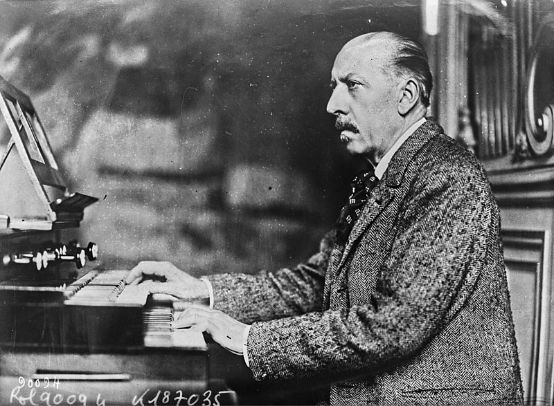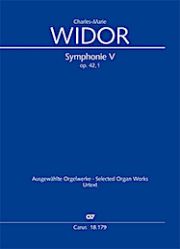Clarity in the jungle of versions
Charles-Marie Widor's Organ Symphony No. V has been published in a series of new editions by Carus, the aim of which is to present a representative selection of the composer's organ works.

With the publication of the best-known organ symphonies by Charles-Marie Widor (1844-1937), Carus-Verlag is making another important contribution to the edition of French organ symphonies following its edition of Louis Vierne's organ works. While the problem with Vierne is the numerous printing errors, partly due to the composer's poor eyesight, with Widor it is the question of the authoritative version that an editor must decide on. The composer revised his organ symphonies several times in the course of his career, repeatedly making major or minor corrections and adjustments or even replacing entire movements, as in the case of the Second Symphony, for example, where a typically Romantic "hunting horn scherzo" was replaced by a Salute Regina in Widor's late style, which seems to fit only with difficulty into the context of the other movements. Due to these differences between the versions, it is important to decide carefully which edition to use, all the more so as early versions that do not correspond to the composer's "last will" are also circulating on the Internet or with American reprint publishers. For example, the inexpensive Dover edition of the complete symphonies in two volumes, which is popular among students, reproduces the 1887 version. Wear and tear on the original printing plates also causes certain difficulties with regard to the legibility of the text.
In the case of the present symphony, Widor's most famous thanks to its rousing final toccata, the Fifth, the first editions appeared in 1879 and 1887, but were revised in 1901, 1902-11, 1920 and 1928/29, with Widor, as always, revising the musical text and making further changes even after the last edition. For example, the second movement (originally an ABA form with an integral reprise of the A section and an internal repeat) was reduced by almost 150 bars for the last edition by omitting the repeat and drastically shortening the A' section; in the Toccata, Widor added articulations and accents and slowed the tempo from crotchet = 118 to 100 - a clear adjustment that can be verified by Widor's own recording from 1932, but which many interpreters still ignore today.
Back in the 1990s, A-R Editions published a critical complete edition of all the symphonies in the USA, which provided meticulous information about the differences in the texts and readings, but received little attention in this country. The present Carus edition by Georg Koch also uses the last revision of the symphony from 1928/29 as its main source, supplemented by later handwritten corrections by Widor; the differences between the two new editions are therefore marginal. The Critical Report provides insight into readings of the earlier versions or additions from Widor's circle of students (in the present case, for example, Albert Schweitzer's hand copy with a suggested shortening), some of which could represent interesting alternatives, for example in certain registrations, which Widor in his late style made less colorful and more "clarified" than two decades earlier. The player thus has a reliable source with an informative preface that provides a clear picture of the work's genesis and, like its American counterpart, is highly recommended.
Charles-Marie Widor: Symphonie No. V pour Orgue op. 42,1, edited by Georg Koch, CV 18.179, € 29.95, Carus, Stuttgart 2018








